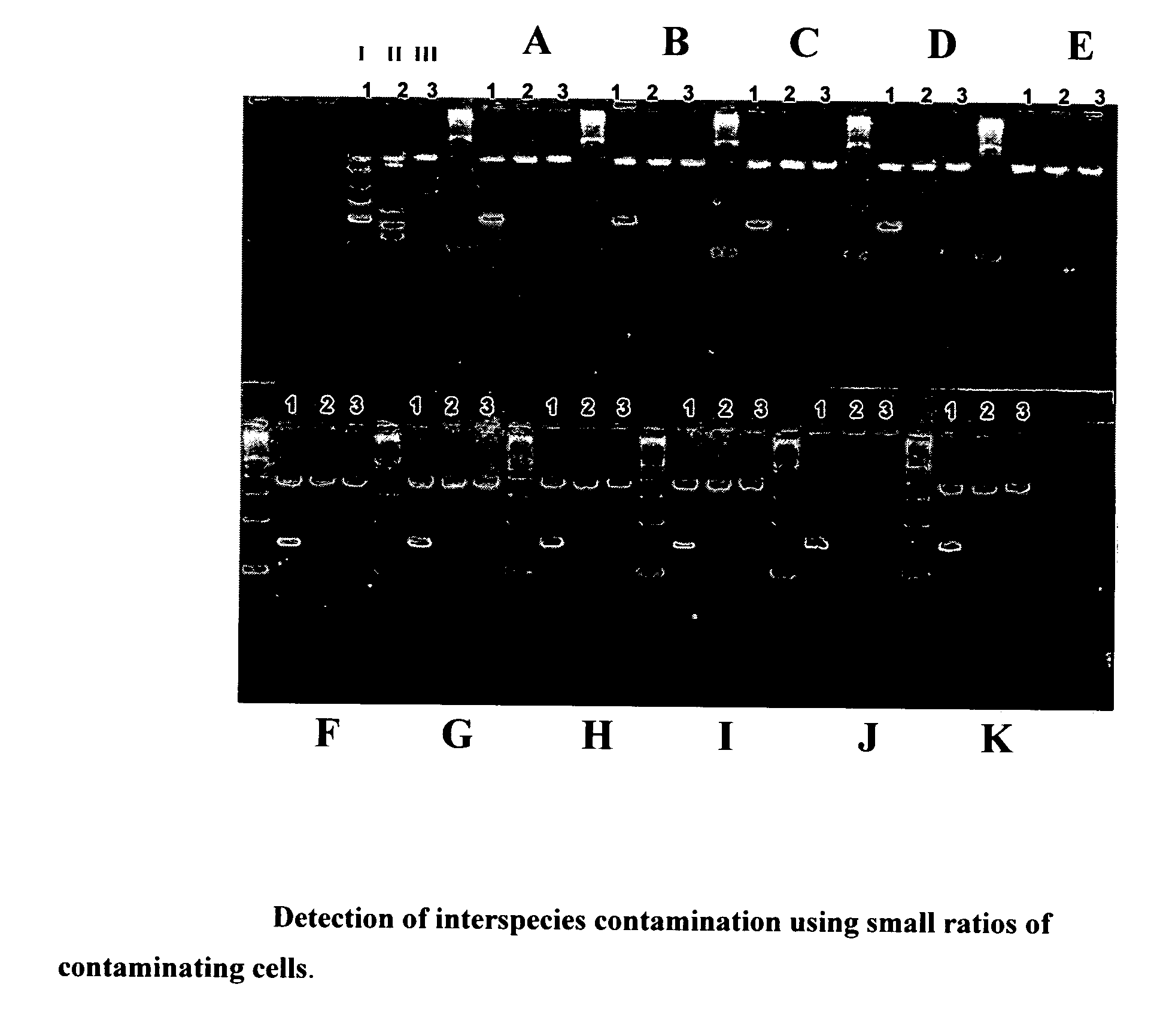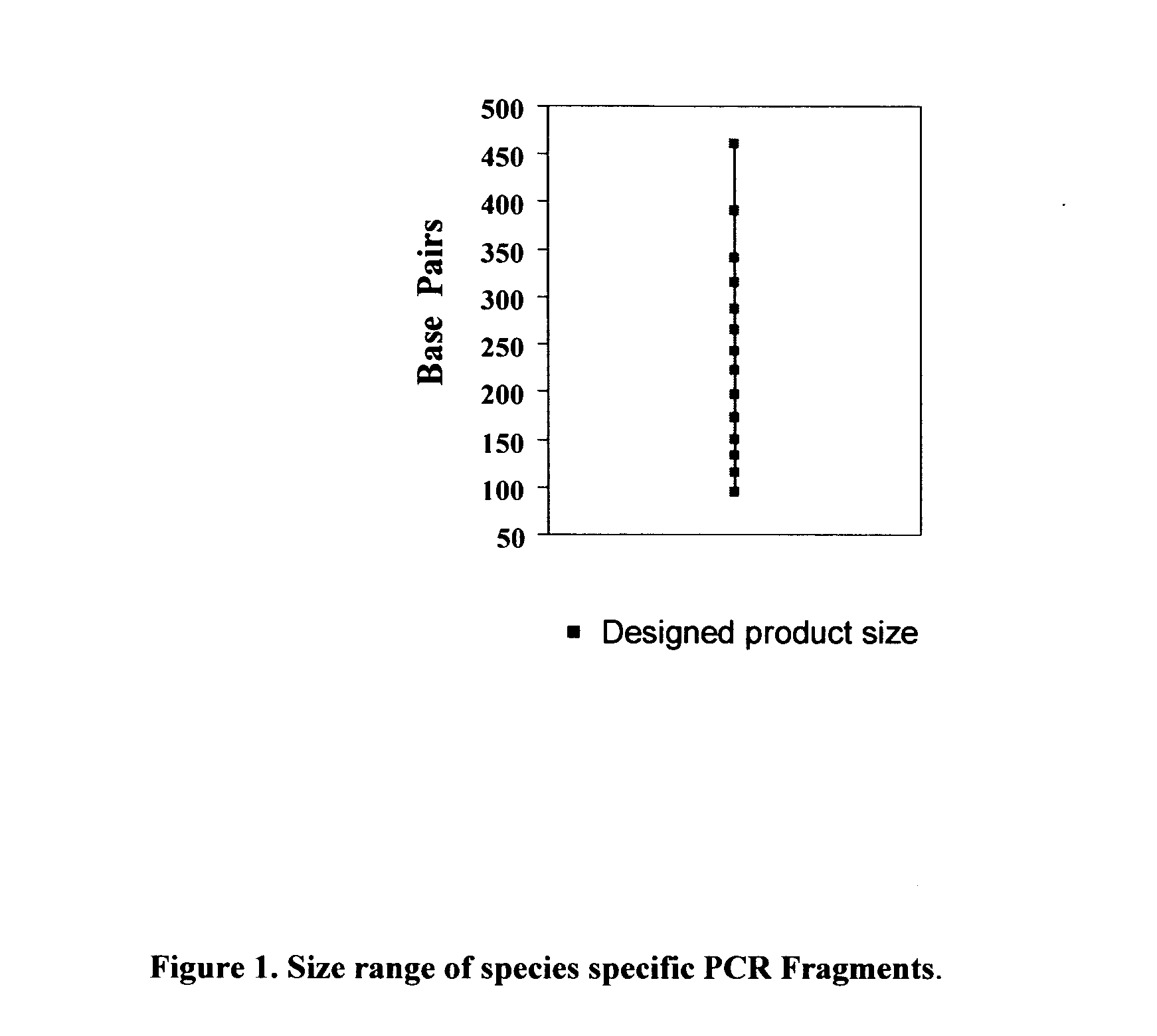Method for detecting the presence of mammalian organisms using specific cytochrome c oxidase I (COI) and/or cytochrome b subsequences by a PCR based assay
a cytochrome c oxidase and cytochrome b subsequence technology, applied in the field of pcr (polymerase chain reaction) based assay, can solve the problems of unrealized ideal, unreliable scientific results and reproducibility, and possible cross-contamination with cells from unrelated cell lines
- Summary
- Abstract
- Description
- Claims
- Application Information
AI Technical Summary
Benefits of technology
Problems solved by technology
Method used
Image
Examples
example 1
[0245]Various embodiments of the invention will now be described by way of a number of examples. The examples are presented solely to further describe certain embodiments of the invention, and are not to be construed as limiting the invention in any way.
Template Preparation
[0246]Genomic DNA from different cell lines representing 14 different species; human, mouse, rat, cat, dog, bovine, pig, sheep, goat, horse, Chinese hamster, Green monkey, Rhesus monkey and rabbit was used for the development of the assay. The cell lines used in this study are: CCL-1, CCL-60, CRL-1430, CRL-2032, CRL 1601, CL-101, CCL-81, CCL-2, CCL-57, CRL-1633, CCL-209, CRL-6306, CCL-73 and CCL-39 (ATCC, Manassas, Va.), K562 (Promega, Madison, Wis.). Purified genomic DNA was extracted from 106 cells using the UltraClean Tissue DNA kit (MoBio, Carlsbad, Calif.).
[0247]To test the efficiency and the sensitivity of the developed assay, 103-106 cultured cells were harvested and then incubated for 15 minutes at 37° C. ...
PUM
| Property | Measurement | Unit |
|---|---|---|
| temperature | aaaaa | aaaaa |
| pH | aaaaa | aaaaa |
| pH | aaaaa | aaaaa |
Abstract
Description
Claims
Application Information
 Login to View More
Login to View More - R&D
- Intellectual Property
- Life Sciences
- Materials
- Tech Scout
- Unparalleled Data Quality
- Higher Quality Content
- 60% Fewer Hallucinations
Browse by: Latest US Patents, China's latest patents, Technical Efficacy Thesaurus, Application Domain, Technology Topic, Popular Technical Reports.
© 2025 PatSnap. All rights reserved.Legal|Privacy policy|Modern Slavery Act Transparency Statement|Sitemap|About US| Contact US: help@patsnap.com



